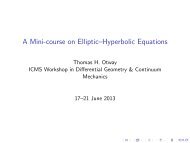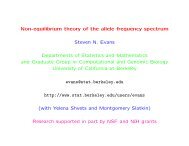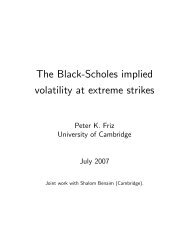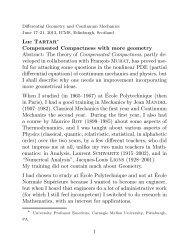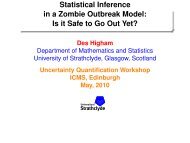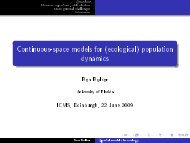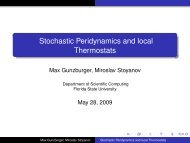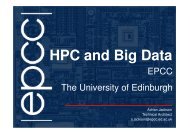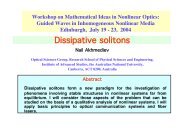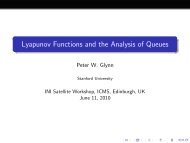1. Introduction We are going to investigate the equation ut(t, x ... - ICMS
1. Introduction We are going to investigate the equation ut(t, x ... - ICMS
1. Introduction We are going to investigate the equation ut(t, x ... - ICMS
- No tags were found...
You also want an ePaper? Increase the reach of your titles
YUMPU automatically turns print PDFs into web optimized ePapers that Google loves.
10Therefore we may and will assume that a ij ≡ δ ij . Also assuming γ =0does notrestrict generality.Now we <strong>are</strong> ready <strong>to</strong> use Theorem 2.4. From Sec. 4.3 of [8] we know that A isuniquely defined and is bounded as an opera<strong>to</strong>r acting in L p (R,L p ). <strong>We</strong> <strong>are</strong> <strong>going</strong> <strong>to</strong>check that A satisfies <strong>the</strong> assumptions of Theorem 2.4 with F = G = L p .Observe <strong>the</strong> simple fact that, for t>0, k =1, 2, ..., andf ∈ L p ,wehave∂T t f/∂t =∆T t f and ||∂ k T t f/∂t k || Lp ≤ Nt −k ||f|| Lp ,where N depends only on d and k. Fort>0 introduce <strong>the</strong> opera<strong>to</strong>rK(t) =∆T t : L p → L pwith norm bounded by Nt −1 ,whereN is independent of t. Fort ≤ 0, letK(t) =0.Since a ij = δ ij ,wehaveRf(t, x) =∫ t−∞T t−s f(s, ·)(x) ds.In addition, if t is at a distance from <strong>the</strong> support of f, <strong>the</strong>n differentiating <strong>the</strong> aboveformula presents no difficulties and we findAf(t, x) =∫ t−∞∆T t−s f(s, ·) dx =∫RK(t − s)f(s)(x) ds.




